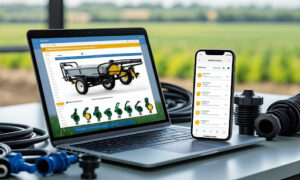More and more, Chief Information Officers (CIOs) are relying on robotic process automation (RPA) or cognitive automation to improve productivity in workplaces, streamline data processing, and improve project management.
While the two types of technologies are often used interchangeably, they actually differ significantly in their core functionality. This is important because it changes how CIO will implement the technology into a business’s operations.
Read on to learn what RPA and cognitive automation are and five key differences between the two.
What are RPA and Cognitive Automation?
The best way to think about robotic process automation (RPA) is as a software worker. This software was designed to perform any task that can be controlled with rules and schedules.
Examples of tasks include:
- Moving from one application to another.
- Inputting multiple data entries.
- Copying and pasting.
- Reentering retrieved data.
- Retrieving customer profiles, among others.
For RPA to work, the data has to be structured. It might use processes like screen-scraping to gather data, but it is useful for repetitive tasks or tasks that require a lot of manual work. Other tasks include macro scripts and workflow automation.
On the other hand, cognitive automation is more aligned with AI and natural language processing in that it tries to mimic human actions. Cognitive automation is learning technology. It is trained to automate business processes, and it might provide input to human workers to add to analytical insights.
Cognitive automation is pre-trained software and is great at analyzing large volumes of data. It can do this extremely fast, with accuracy and consistency as well. Businesses might leverage cognitive automation to bring technological intelligence to data-intensive processes.
RPA vs. Cognitive Automation
RPA and cognitive automation may be integrated into similar business models and for similar purposes, but each software is distinct. It’s also important that the two software are complementary rather than compete with each other. And both should be used to augment human workers.
Major differences between the two include how it is used in a given workforce, how human workers must interact with the software, and the types of data they can interact with.
There are obvious trade-offs for using each software. For example, RPA requires less training upfront compared to cognitive automation, but it can break down if the applications that it works with change. RPAs are robots (or specialized computer programs) that operate based on rules and schedules. Therefore, CIOs might need to configure RPAs, and then manage them as internal processes change.
Unlike cognitive automation, RPAs don’t learn from the data it collects. Cognitive automation is designed to learn more than RPAs, but they require more training at the outset, and sometimes the training necessary is in-depth or technical.
Five Ways RPA and Cognitive Automation Differ
#1. Structured vs. Unstructured
The type of data that RPA and cognitive automation can read matters. RPA, a technology that has been around for 20 years, reads structured data or predefined data. Therefore, the robot only needs to read the data and definition to then follow through on the rules for that dataset.
Cognitive automation can handle unstructured data, which include open text in emails, voice messages, or videos, for example. It might be told what the data is (i.e., like an invoice or dataset of invoices) and given rules based on the data included in that dataset. However, it can then make “judgement” calls based on that data.
These technologies might work hand-in-hand. RPA might locate and organize invoices, but cognitive automation can scan the invoice and identify how much is owed, who the payee is, and even detect inconsistencies or fraud.
#2. Tactical vs. Strategic Functional Reach
While process automation is fundamental to RPA and cognitive automation, RPA remains tactical in that the reach can only go so far. Cognitive automation extends the boundaries of what is possible beyond what was feasible with RPA.
You might deploy RPA for completing mundane, regular, and recurring tasks. But, you might deploy cognitive automation to understand the diversity or complexity of data.
Cognitive automation uses optical character recognition (OCR), computer vision, natural language processing, and virtual agents, which compartmentalizes unstructured data into structured formats. This enables complex decision-making, complex reasoning, and predictive analytics through robotics.
#3. If-then vs. Human Augmentation
Basic computing follows an if-then format. This means that “if” a given item is present, the computer will follow up with a defined action. This is what RPA is. It follows the if-then-else logic for automating rules-based tasks. RPA needs to be in a stable environment with defined data to operate.
Comparatively, cognitive automation will ‘mine’ data to find insights so that humans can make qualified judgments. Cognitive automation could be creating more tasks for RPA to accomplish, especially since it can transform PDF documents into data structures that RPA can read.
#4. Straight Through vs. Exception
One way of looking at the differences between RPA and cognitive is on the logic it uses.
RPA, for example, uses a ‘straight-through logic approach. Cognitive automation uses an ‘exception’ approach, focusing less on rules-based tasks and prioritizing complexity. It might use optical character recognition (OCR) to capture text and deploy AI (machine learning) to understand the details.
#5. Programmatic vs. Scalable Learning
Simply put, RPAs are programmed, and their tasks won’t change much. This is why RPA is great for mundane tasks. They follow rudimentary rules as long as the system around them is unchanged.
Cognitive automation might learn based on the data they are being fed and then makes a decision. These systems learn on the job, much like a human would, to provide insights and opportunities to the end-user regularly.
How Both Have Their Role to Play Within Businesses
When implementing RPA or cognitive automation into your business, CIOs need to know how they can be used.
Remember that RPA is designed to access information that is already in your computer systems and will require minimal training. For this reason, RPA offers an almost immediate return on ROI due to simplifying mundane tasks and ensuring:
- Accuracy: Minimizes human error and associated costs.
- Compliance: Creates an audit trail and follows regulatory rules.
- Speed: It can complete tasks 4-5 times faster than humans.
- Efficiency: It completes tasks without getting distracted.
- Reliability: It’s a robot!
- Improved employee morale: Employees are free from mundane, repetitive tasks.
While RPA is designed to eliminate human error, it can also be hard to scale as businesses grow. If you want a system working alongside your company’s growth, then you should consider cognitive automation as well. Cognitive automation’s ROI might take longer because of the start-up training and the level of involvement in learning human behavior.



































